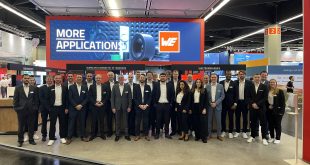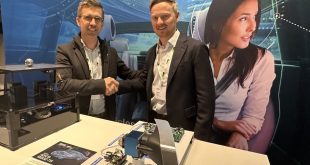Kyocera announced that the company developed the world’s first full-spectrum LED lighting for aquariums. Kyocera’s high-colour-rendering LED lighting combines its proprietary violet LEDs and RGB (red, green and blue) phosphors to create lights close to natural sunlight at specific underwater depths. Kyocera’s new LED lighting is ideal for growing various water creatures as it reproduces the light close to the natural habitats of corals and water plants. The optical spectrum can also be customised to reproduce the deep blue colour for ornamental purposes.
Kyocera’s aquarium LED lighting will be available to the Japanese market in the middle of August in four types:
- Marine Blue reproducing spectrum of sunlight at 2.5m below sea level
- Aqua Blue reproducing spectrum of sunlight at 11m below sea level
- Natural White reproducing similar spectrum of sunlight above ground
- Deep Blue for ornamental purposes
- Lamps emitting light mimicking natural sunlight helps grow coral and water plants
By combining violet LEDs and RGB phosphor blending technology, Kyocera’s high-colour-rendering LEDs produce light extremely close to natural sunlight. By customising the spectrum, it reproduces the light close to that of the natural habitats of corals and water plants at specific underwater depths.
Furthermore, as each LED element emits full-spectrum light close to the natural sunlight, it produces light with luminance uniformity without colour separation making it ideal for growing corals and other sea creatures for a long period of time.
- High light output
Kyocera’s proprietary ceramic technology provides excellent durability in an LED light. In addition, an air-cooling function utilising air convection offers a high output while maintaining high colour rendering. Assuming this light would be used near the sea, Kyocera developed a robust design with a heat dissipation structure to use natural air. As this design does not require a fan, which was traditionally considered one of the main reasons for product breakdown, the new aquarium LED light can minimise failures.
Dr. Beatriz Estela Casareto, professor at Research Institute of Green Science and Technology, Shizuoka University said: “Whether corals can normally grow strongly depends on the health status of their symbiotic algae named zooxanthellae. As a result of their photosynthesis, zooxanthellae provide corals with essential organic matter that corals utilise for their growth. Light is a very important environmental factor that determines the photosynthetic performance of zooxanthellae and, therefore, the coral health status. At Shizuoka University, we had developed an experiment to test the abundance of zooxanthellae and their photosynthetic pigments (chlorophyll a and peridinin) in aquariums at 24℃, to test the effect of light on coral growth using Kyocera’s Natural White’s LEDs (KNW) and a conventional LED (CLED) at 400 µm cm-2 sec-1. The experiment was conducted for 2 months using two coral species, Montipora digitata and Acropora spp. from Okinawa. Results showed that corals incubated under KNW kept their original color intact against corals under CLED that appeared pale after 2 months. Zooxanthellae density increased 32 to 47 per cent, Chl-a 17 to 44 per cent and peridinin 26 to 125 per cent in KNW treatments when compared to CLED treatments. Results clearly showed that, due to its similarity to the natural sunlight, the KNW lamp is highly suitable for growing corals during a long period of time. It is also expected that, using KNW, new results in the study of coral physiological responses and coral bleaching will be obtained.”
Mr. Tetsuo Takeshima, director of Enoshima Aquarium said: “We had been looking for a high-quality light source alternative to metal-halide lamps since manufacturing and importing mercury products will be restricted from 2020 based on the Minamata Mercury Convention signed in 2013. It had been a big challenge for us because many sea water creatures cannot grow well with conventional LED lighting. We found Kyocera’s LED lighting and tried using it for an experiment to raise eelgrass, which is difficult to grow with conventional LED, and this experiment showed positive results. We expect Kyocera’s LED to drastically reduce power costs while creating a good environment for raising marine life.”
 CIE Components in Electronics
CIE Components in Electronics




